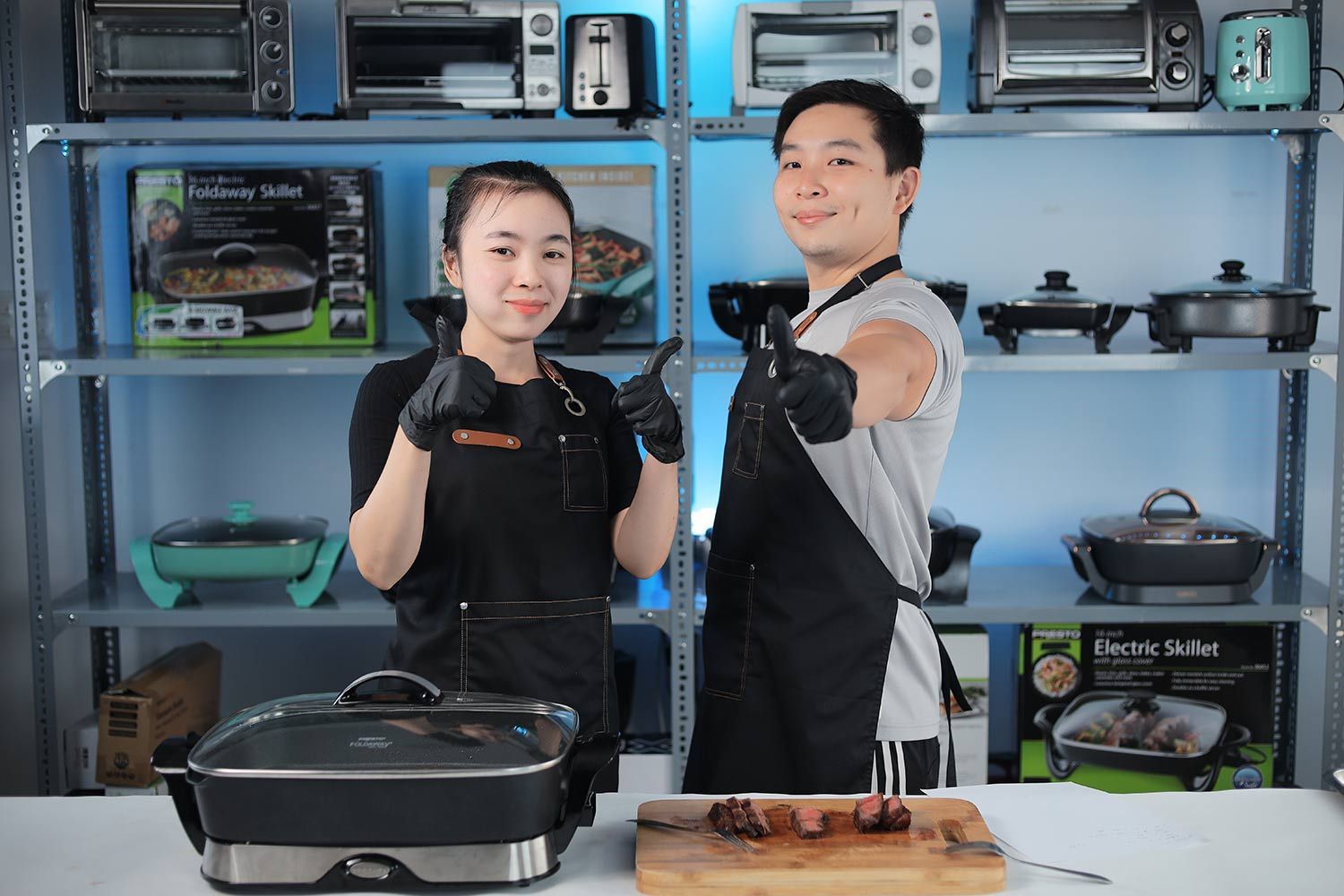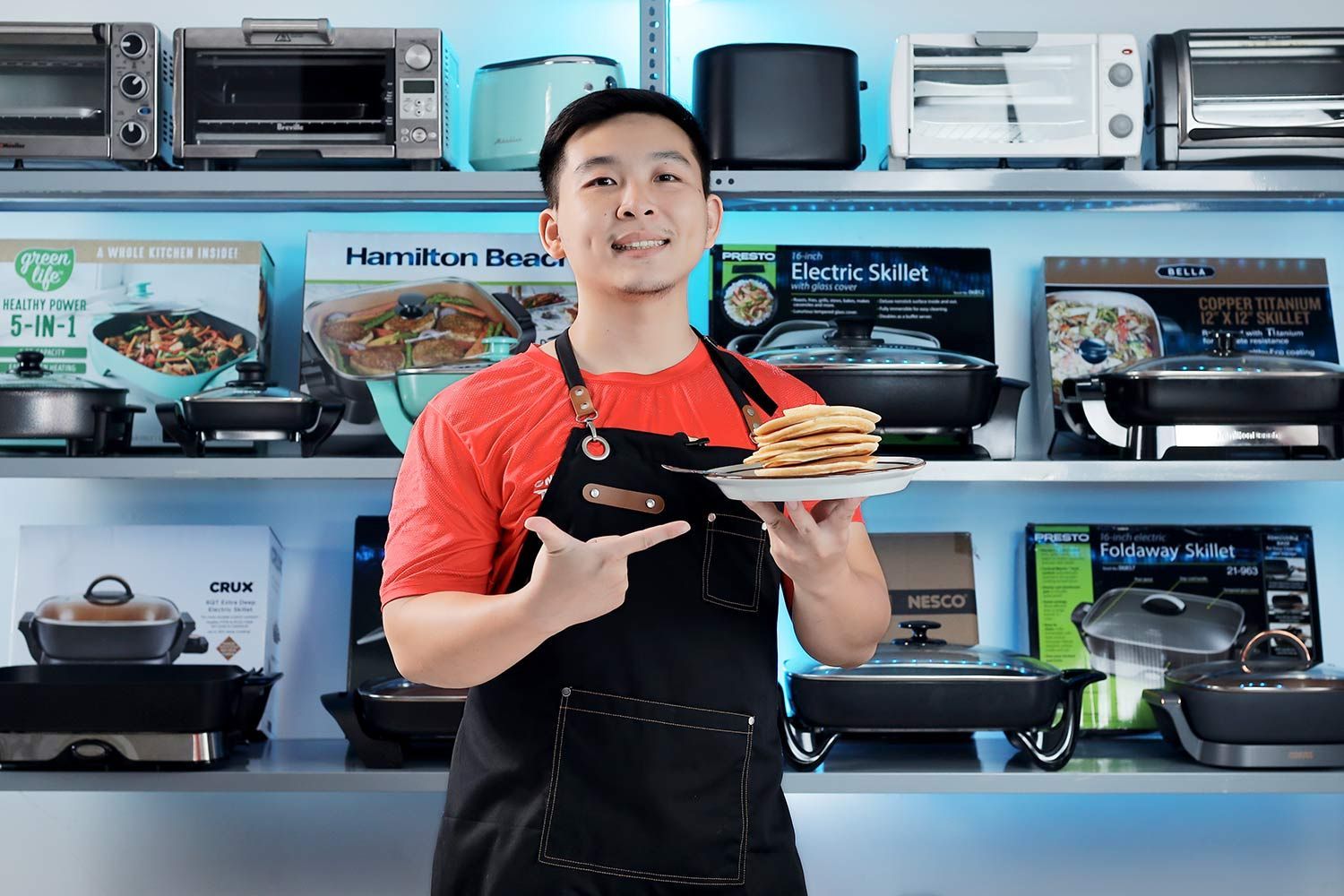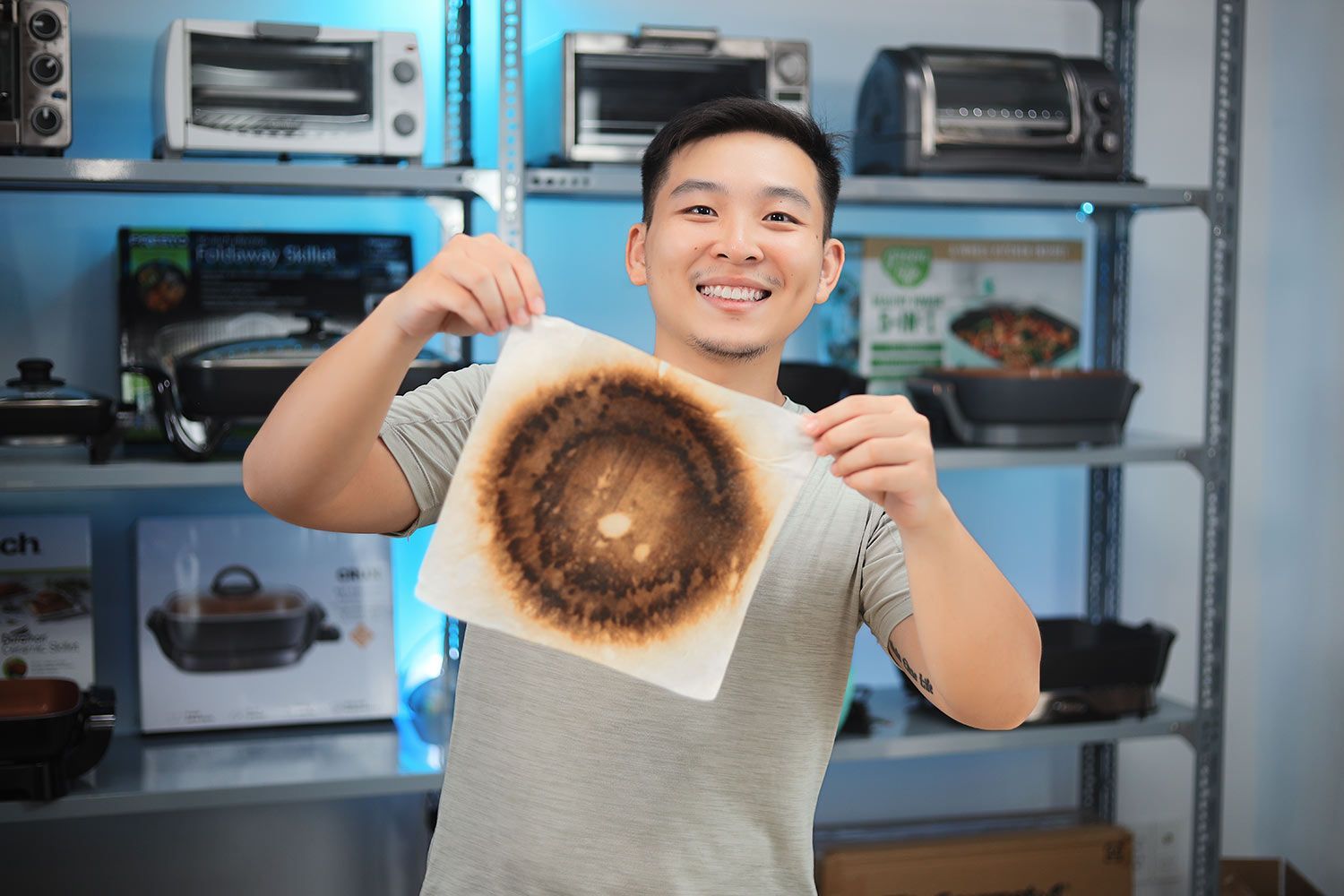Our recommendations are made independently. We may receive commissions from purchases made via our links.
How Shouldit Tests Electric Skillets v1.0
We purchase electric skillets at our own expense to independently test and grade. Read on to learn how we assess performance, design, and usability and how this can benefit you.
An electric skillet, large or small, is a versatile and convenient countertop space saver. A good skillet should be able to handle any task from sautéing, frying, grilling, and steaming, to even making hotpots. However, with differing materials, quality, and design, how does one choose a truly worthwhile electric skillet?
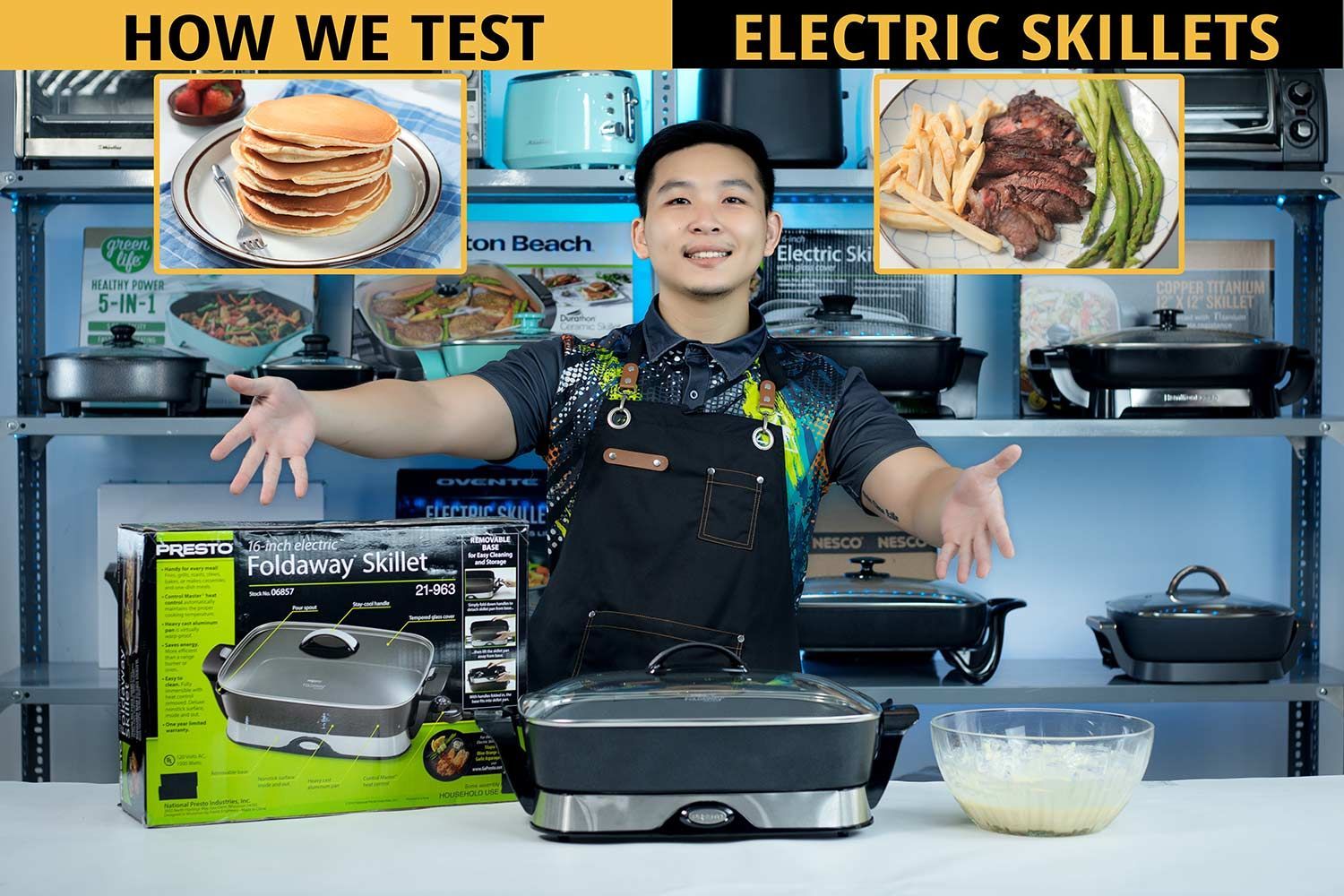
To answer this, we came up with a series of tests. With these, we grade the skillets we purchase on unbiased criteria as detailed in our Performance, Design, and Usability assessments below.
All scores (segmental and total) use an easy-to-understand scale of 0 to 10. To give a rough idea, these are the features to look for in a skillet rated 8/10:
- A durable non-stick coated pan.
- Wide and even heat distribution.
- Can cook a broad range of foods.
- A durable tempered-glass lid.
- Base is detachable.
- Handles are cool-to-touch.
- Thermostat is removable.
Performance (50%)
Our tests are practical, simple, and focus on what matters to the user. We start with Analyzing Heat Distribution (20%), then move on to Making Pancakes (40%), and lastly Cooking Steaks (40%). We video the entire testing process for quality control and also comment on any mishaps along the way.
Analyzing Heat Distribution (20%)
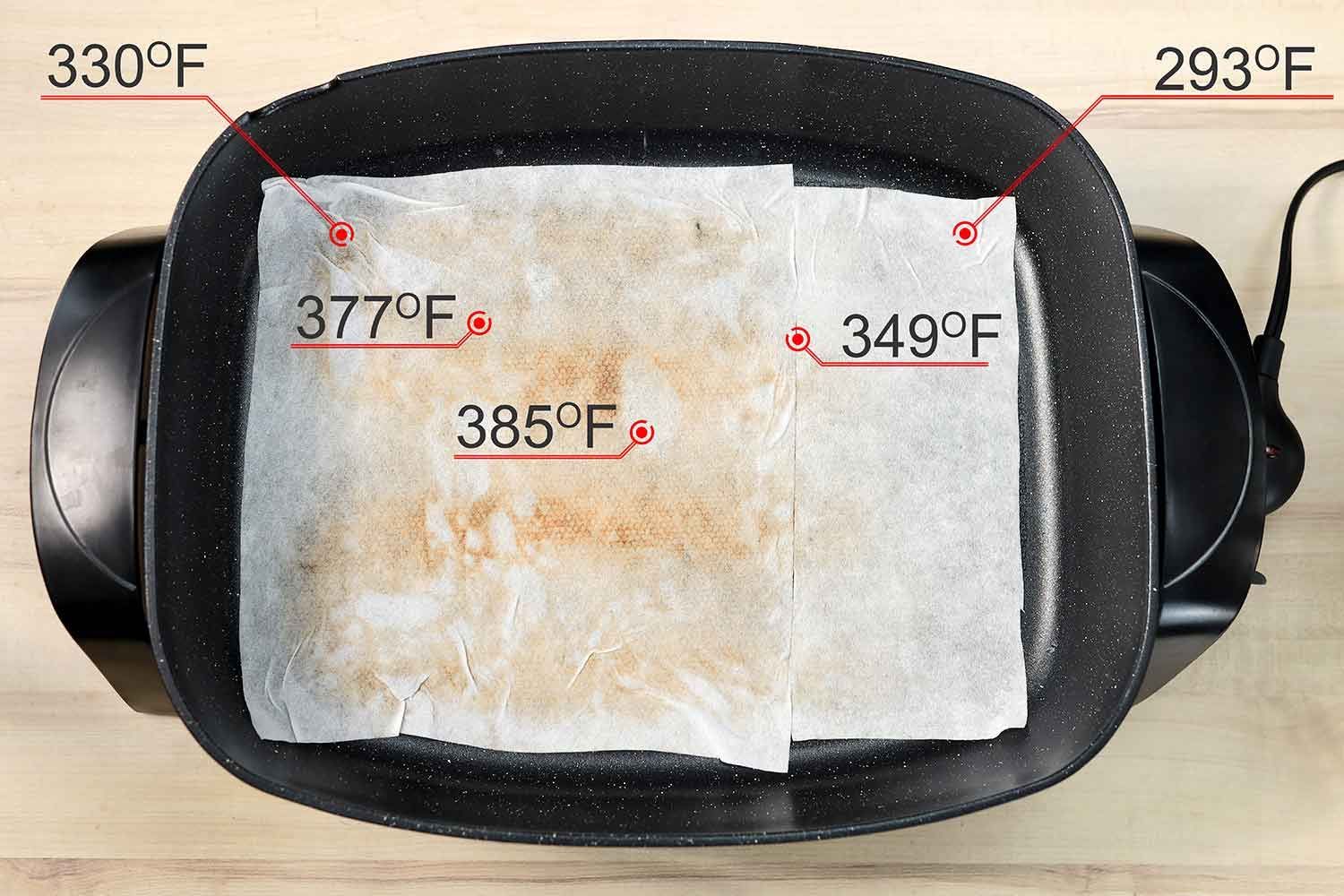
For Analyzing Heat Distribution (20%), we soak an oil absorbent sheet in saturated sugar water, drain off the excess water, then flatten it on the skillet’s surface. We then heat the skillet until the center reaches 400°F and check the temperature of 4 selected points towards the edges with an infrared thermometer.
The sheet gives us a visual heat impression and an uniform surface material for an accurate assessment of any sized skillet. The score is calculated based on the average temperature difference between the 5 points and the color pattern of the caramelized sugar.
Making Pancakes (40%)
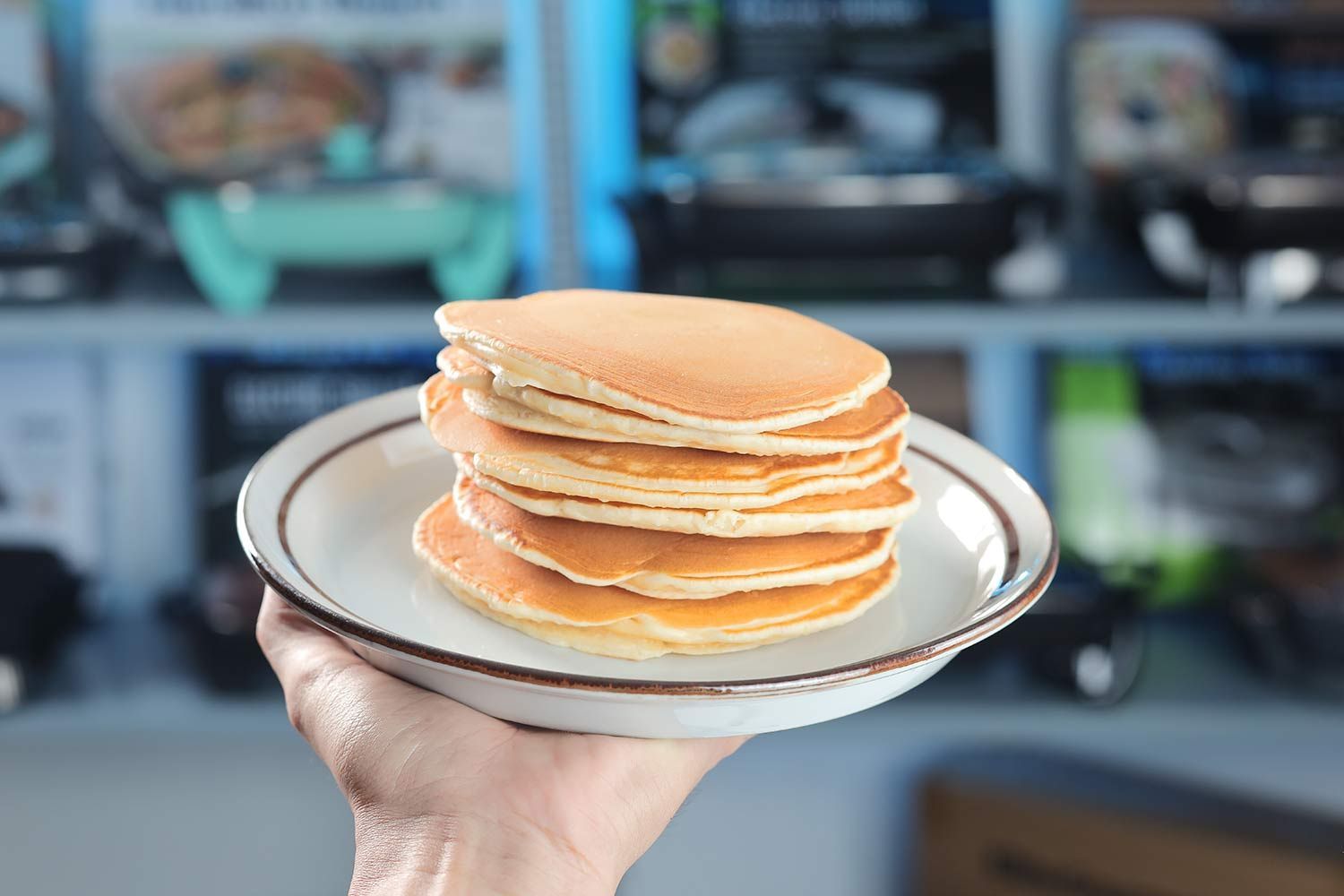
The next test is Making Pancakes (40%). We chose this test for its simple and universally common recipe, and to test how fast the skillet preheats to 350°F. Not to mention whether the skillet can make great pancakes!
We define a perfect pancake as having an even golden brown color with a moist and fluffy interior. In order to showcase the non-stick coating, we don’t glaze the pan with butter or oil. Secondly, we use this test for a run-off evaluation of ease of cleaning.
Cooking Steaks (40%)
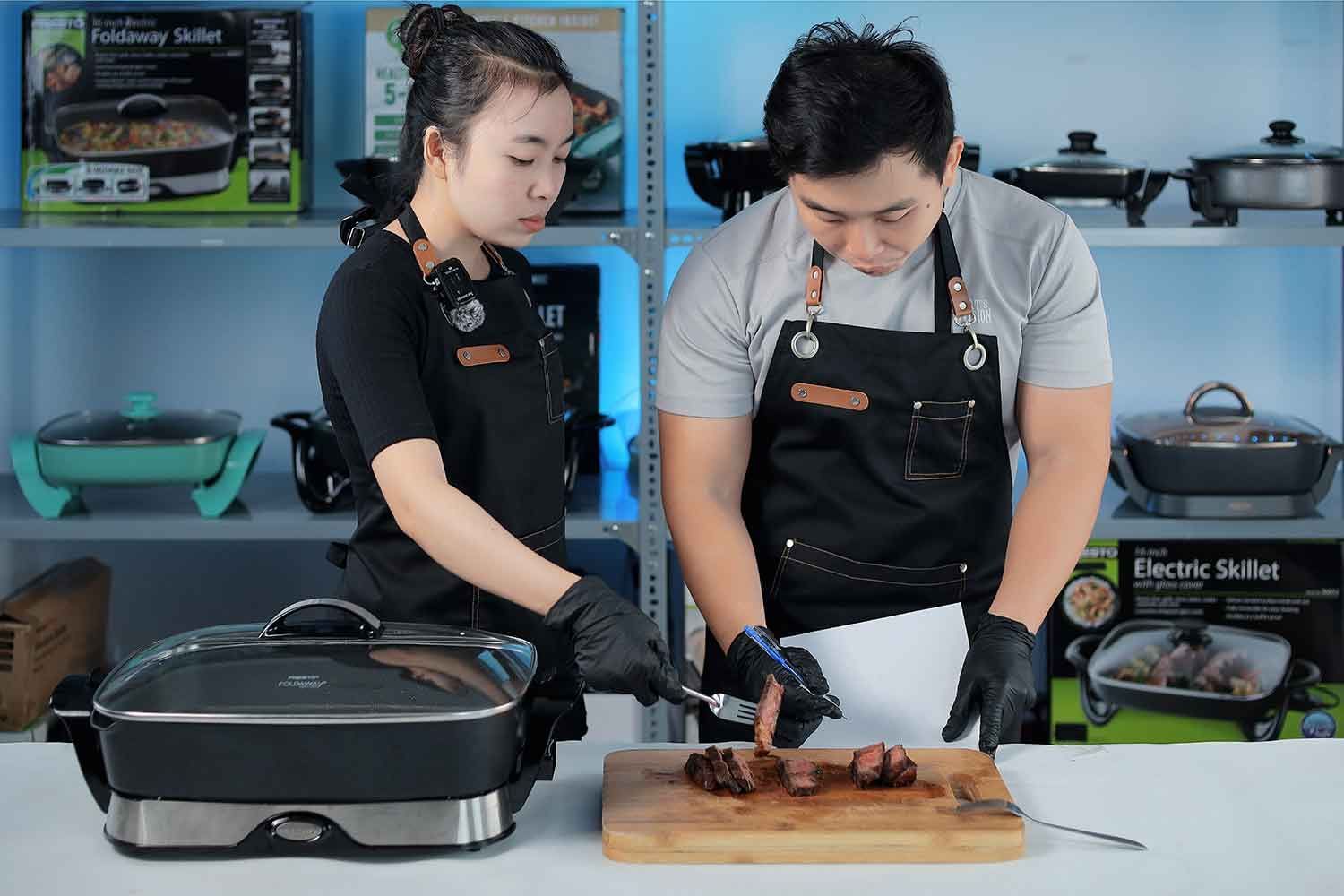
Lastly is Cooking Steaks (40%), and the reason is simple: ‘Who doesn’t enjoy a juicy steak!?’ We kept the seasoning to the most basic with just salt and pepper.
Cooking a steak allows us to test preheating to 400°F and provides an assessment of good crusting and even cooking for the perfect medium-rare steak. This test is pretty messy but it simultaneously showcases the non-stick coating capabilities and provides another test case for ease of cleaning.
Design (25%)
We evaluate the design of electric skillets based on their structural features—what they have and what they don’t have. For this purpose, we break down the skillet into four main parts: Pan (40%), Lid (15%), Base (30%), and Thermostat (15%).
Pan (40%)
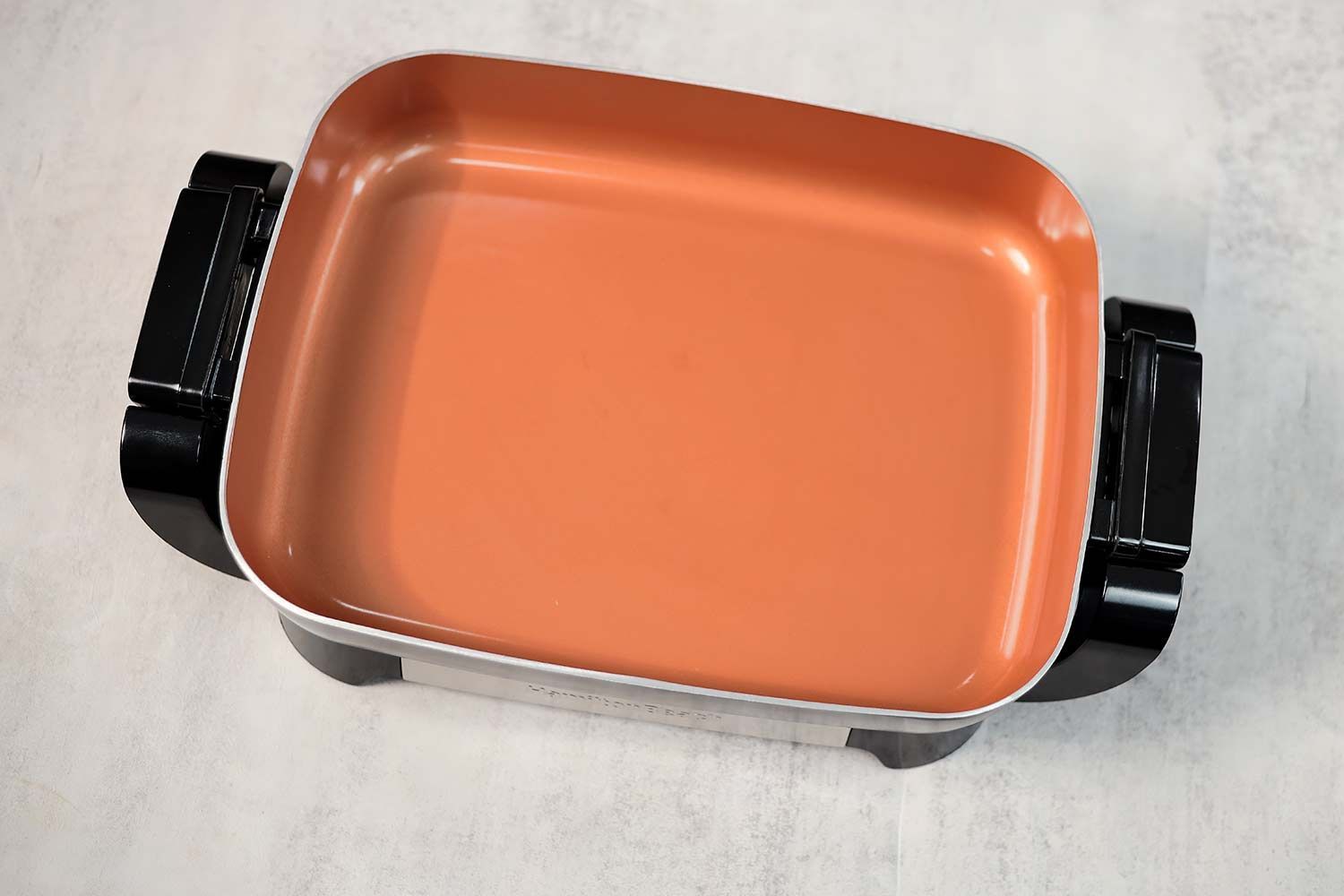
For the pan, we focus on the metallic base material, the non-stick coating, and the handles. We also check if it has a pouring spout and if it’s dishwasher-safe or not.
(+1) | (+2) |
|---|---|
Aluminum pan | Cast aluminum pan |
Teflon coating | Ceramic coating Granite coating |
2 mm thick | > 2 mm thic |
Handle | |
Spout | |
Dishwasher-safe |
Lid (15%)
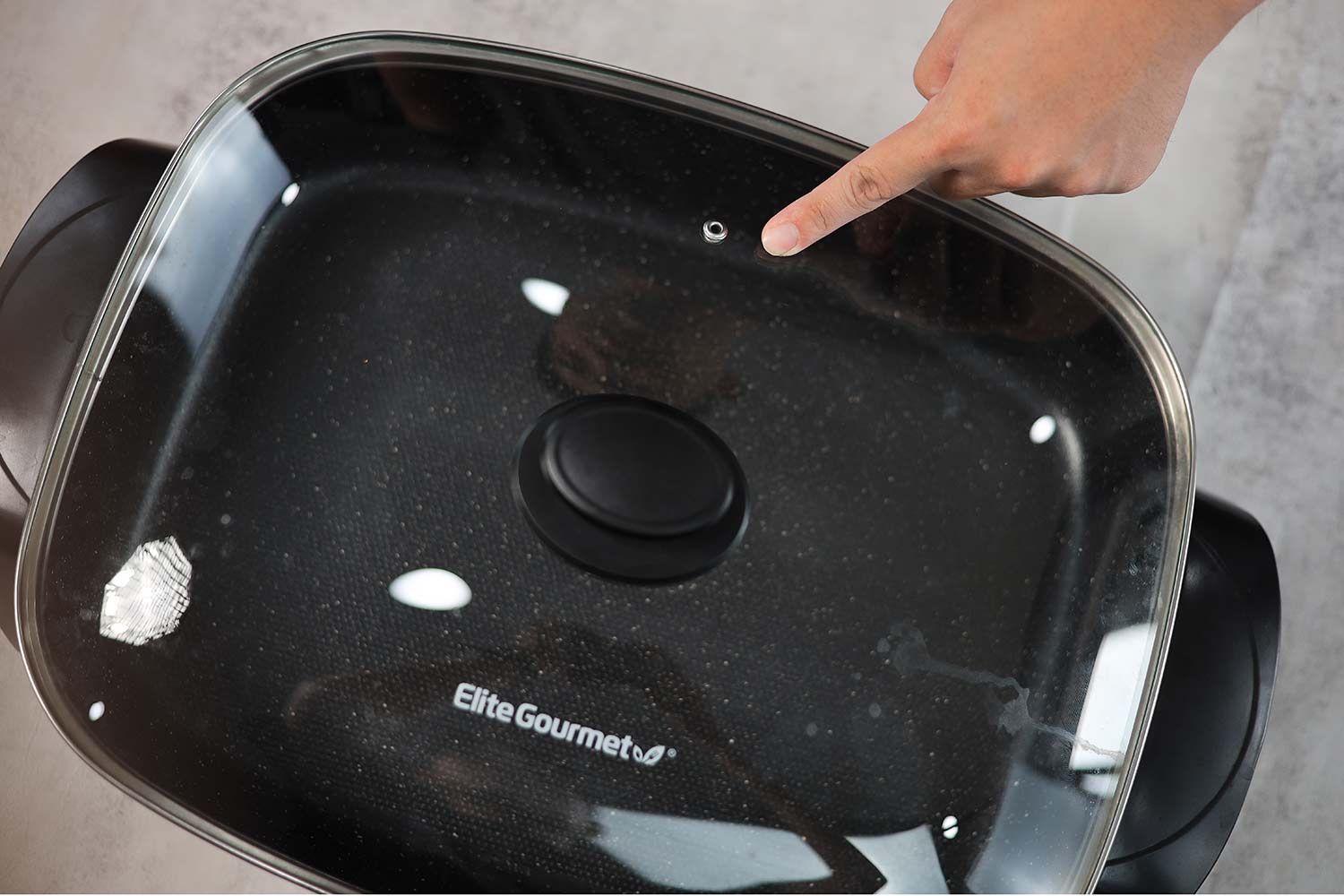
For the lid, we pay attention to the material and if it is sized correctly to fit the pan. We also check if the handle or knob is cool-touch, if the lid is dishwasher-safe, and if it has a steam vent.
(+1) | (+2) |
|---|---|
Thermosetting plastic lid handle | Metal lid handle |
Correctly-sized lid | |
Metal edging | |
Tempered glass | |
Steam vent | |
Dishwasher-safe |
Base (30%)
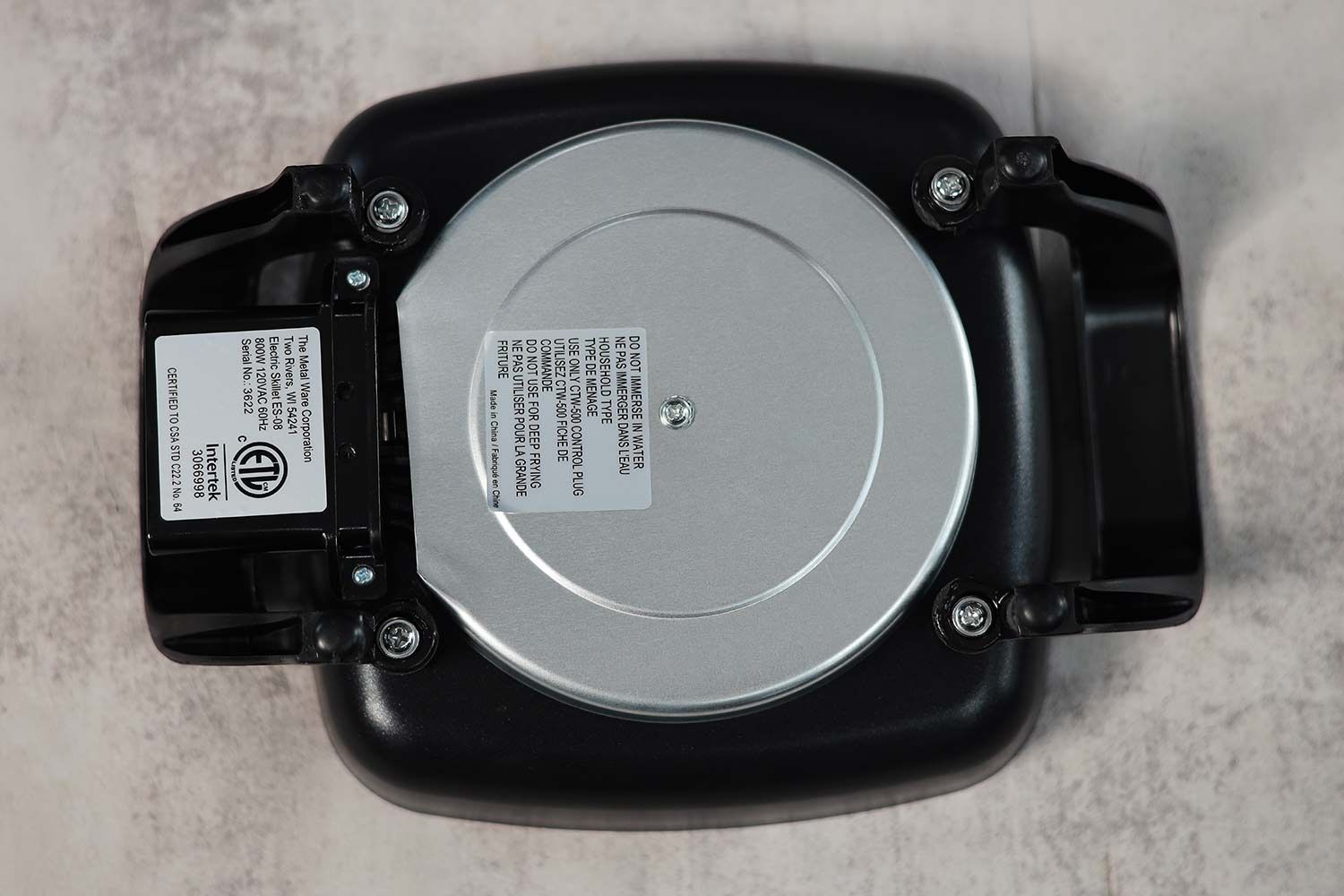
For the pan handles, we examine the material and the anti-slip grips. We also check if the pan clips off and is detachable or even dishwasher-safe.
(+1) | (+2) |
|---|---|
Thermosetting plastic base | Metal base |
Detachable from pan | |
Anti-slip pads | |
Dishwasher-safe | |
Foldable handles |
Thermostat (15%)
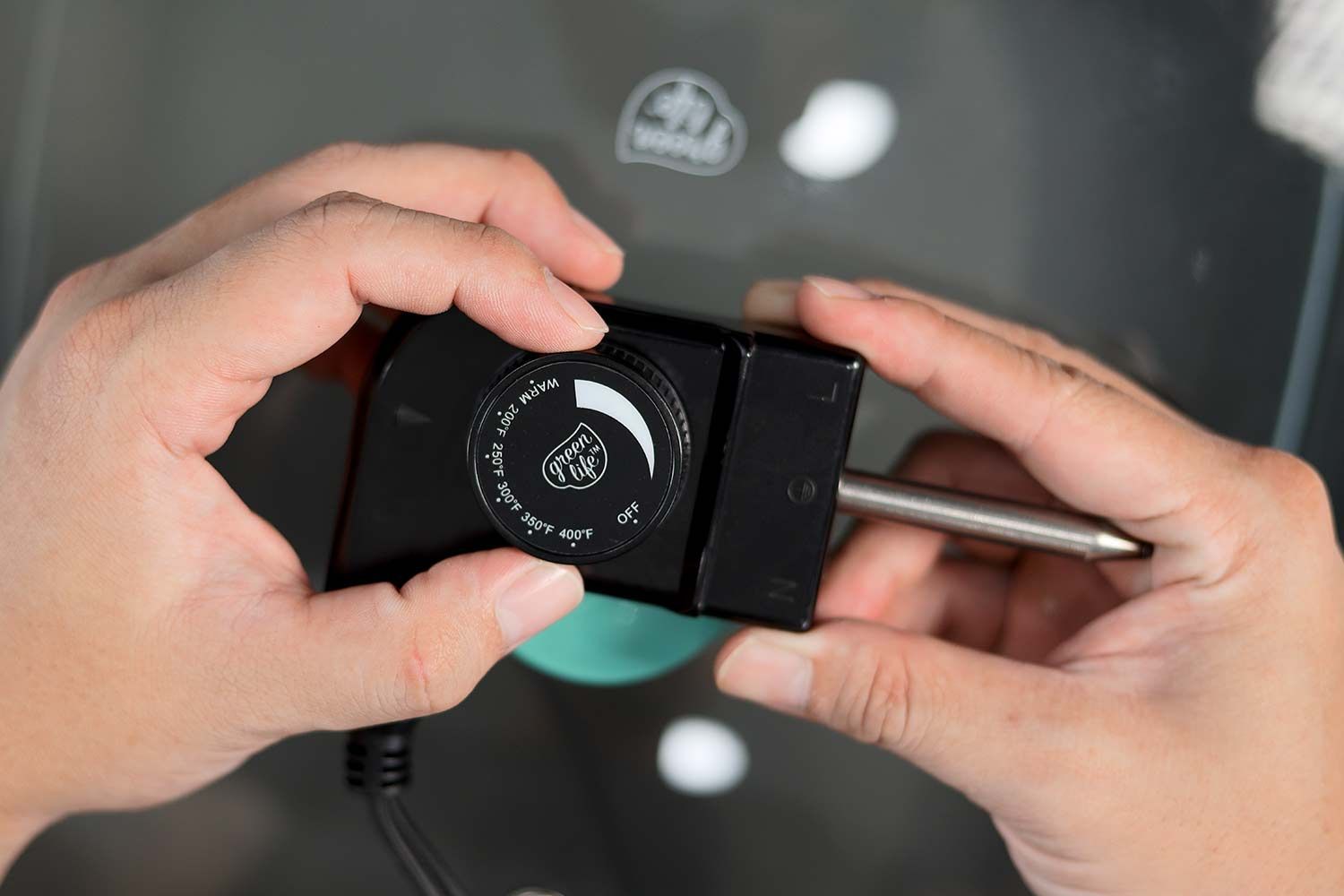
For the skillet’s base, we check the temperature range and if it has an indicator light. Most thermostats are detachable so we check if they fit nicely while being easy to remove. Dishwasher-safe ones are rare, and they receive a bonus point.
(+1) | (+2) |
|---|---|
Normal temperature range | Wide temperature range |
Detachable thermostat | |
Good fit and easy to remove | |
Indicator light | |
Dishwasher-safe |
Usability (25%)
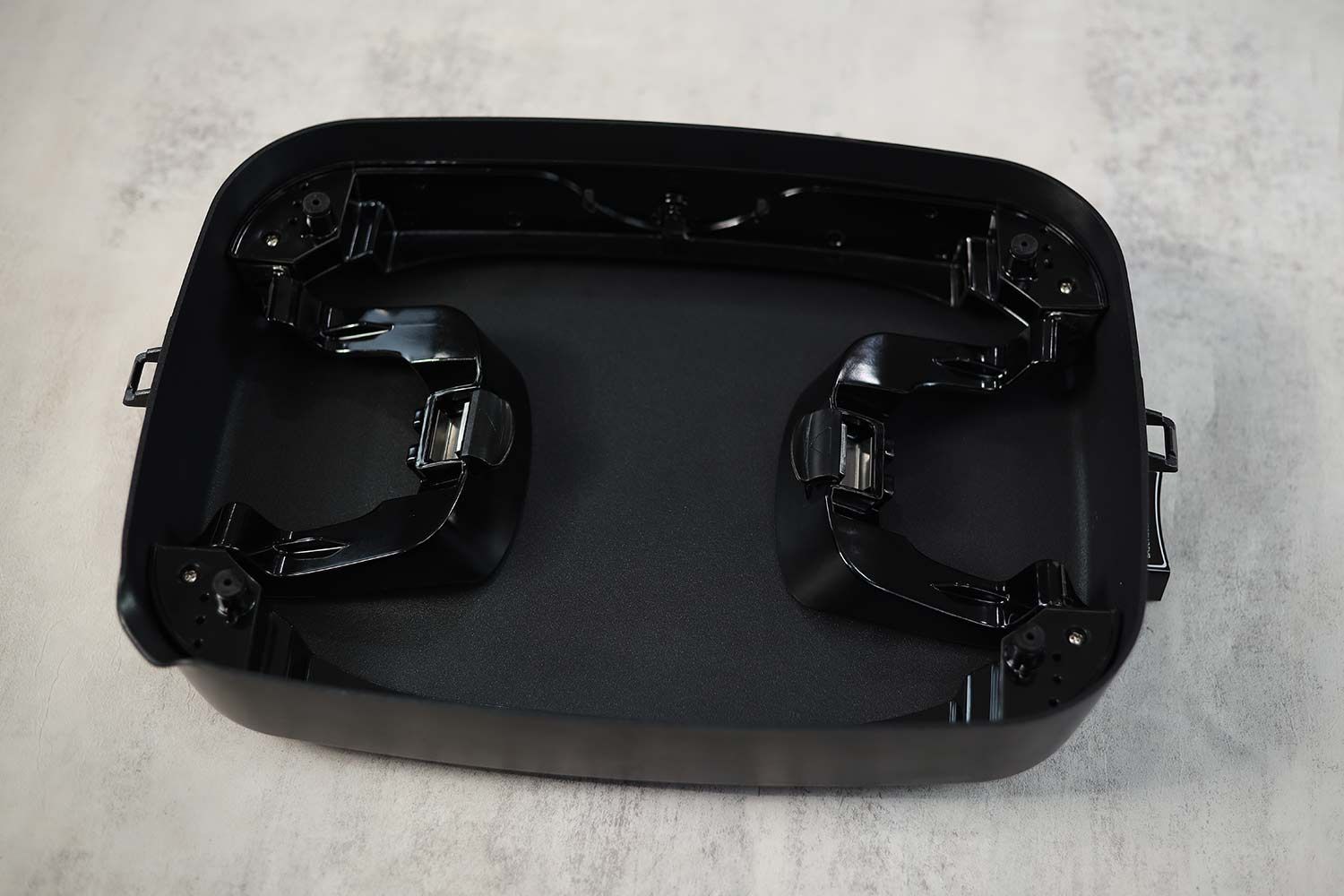
In the Usability (25%) section, we evaluate everything concerning the user experience of the electric skillet. This includes Ease of Use or user-friendliness as well as Cleaning and Storage.
Ease of Use (70%)
The ease of use criteria includes how easy it is to operate the skillet, interact with it while cooking, and its sturdiness.
(+3) |
|---|
Easy to control |
Sturdy while cooking |
Exterior never hazardously hot |
Cleaning and Storing (30%)
Cleaning and storing, as implied, evaluates how easily food debris comes off, the ease of all-round cleaning, and if the skillet can be stored away in a straightforward manner.
(+3) |
|---|
Pan releases food easily |
Easy to clean |
Easy to store |
